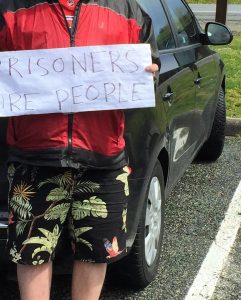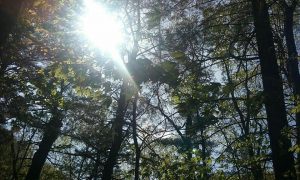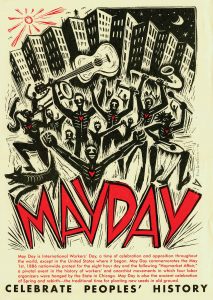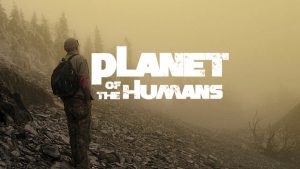People’s Strike – Free Them All!
Environmental Justice means we stand with the most vulnerable
Attended a Prisoner Solidarity car demonstration yesterday, organized by some brilliant comrades I’ve met in recent years, folks who are rocking the organizing of grassroots movement at the intersections of solidarity, mutual aid and justice.
Between learning about strategy, efficacy and opportunity of creative action in times of systems failure, and a commitment to EJ principles that requires us to act in solidarity with those most vulnerable in our midst, I was looking forward to this noise demonstration, as a critical stand of our People’s Strike that began on May Day.
As often happens in life, this protest turned out far more revealing than anticipated, insofar as being reminded of past lessons to guide our vision and direction forward.
In caravan with a dozen vehicles, we drove around the Mission Federal Penitentiary, where nearly half (over 120) of the prisoners have tested positive for Covid-19 so far, the highest concentration of the virus in any Canadian prison. While the government only recently started allowing sick prisoners to access masks, safety measures and some medical attention, we learned that many prisoners are not being allowed to wear their masks because some guards have made lame complaints about not being able to identify individuals with masks on.
What is most offensive is that these prisoners were largely exposed to the Coronavirus from the prison guards bringing the virus into the facility from the outside world – WTF!
And while we watched a number of guards behind the barbed wired fences stumble around in bulky hazardous material suits, full face masks and other protective gear, we also learned that unions representing staff at this prison had struggled with the prison authorities to provide protective gear to even the prison staff for weeks!
Corrections Services Canada staff who engaged us had to be strongly reminded to keep their distance from people during the action, when they walked right up to within a foot of individuals and attempted to film folks and get their names. After being chastised for this violation of safe-distancing practice, and being reminded they were on unceded territories of the Sto:lo and Kwantlen First Nations, the CSC guards retreated to a safe distance to continue filming.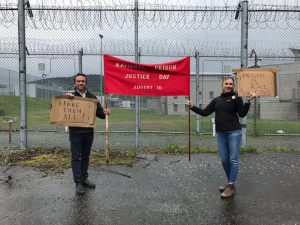
We honked car horns, waved signs and chanted solidarity messages to let inmates know they are not forgotten and that we are concerned for their plight. “Prisons are Barbaric, Free them All” seemed to resonate with those of chanting.
And many of the prisoners on the inside hollered back, waving towels and clothing through the bars of their windows, while banging on plates, window grates and makeshift drums. It was immediately evident why we needed to be here, letting these members of our family know that there are many of us who care. And that they all deserved medical attention, protection from the virus, and ultimately, far more humane, compassionate and fair conditions for treatment, healing and transformative (not punitive) justice.
In recent years, the racialized underpinnings of mass incarceration alongside a growing grassroots movement for decarceration and prison abolition has added depth and layers to our movement for environmental justice. Like our frontline struggles to protect communities from the ravages of oil and gas pipelines, toxic smokestacks and other polluting industries, the siting of new prisons in black, brown and poor communities already overburdened by industrial pollution has been clearly evidenced by many EJ organizers. Also evident is the growth of the prison complex closely following the colonial, petro chemical state’s efforts to keep a critical mass of black, brown, Indigenous and migrant folks marginalized in poverty, in illness and in crime.
As Covid-19 forces us to examine critical design flaws of the colonial extractive economy driving this pandemic, and the corporate welfare state that steals the funds we need to protect our most vulnerable, we need to assess what structures and safeguards need to replace these decrepit systems, so that we are better prepared for future waves of such ecological crises. It’s clear we need to replace the prison/police complex, with our own democratic institutions for transformative and healing justice, where the root causes of people’s pain, trauma and illness are tackled with holistic strategies of healing, care and protection. And while easily said, there is no denying the challenges we’ll face, with all the contradictions and conflicts that make up societal values and visceral responses to matters of crime, punishment, vengeance, reparations and justice.
Fortunately, the prison abolition movement has a long, vibrant and visionary history, even in this remote corner of Turtle Island.
Towards the end of the action, I had the opportunity to hold a banner made by the late, inspiring prison abolitionist Claire Culhane, over two decades ago. I first connected with Claire when I was incarcerated at the Oakalla Prison in 88’ – after being arrested for a forest defense blockade. When Claire learned that the Prison Superintendent was withholding my mail and visitor privileges, she wrote a strong letter chastising the prison boss for violating my rights. The morning after, a stack of letters and small packages were delivered to my cell, with Claire’s aerogram on top of the pile. She had ended the letter saying she’d only be satisfied that corrective measures had been taken, once she could confirm my receipt of her letter. I’ve never forgotten the distinct feeling from reading that letter, the warmth of knowing there were folks on the outside that cared.
As we drove away from the Mission Prison yesterday, one of the prisoners hung a towel outside their bars, with the words THANK YOU scrawled across it.
Environmental Justice requires that we stand up and protect those most marginalized and vulnerable in our society, starting with our elders, our poor, our sick and those suffering from multi-generational trauma, our criminalized and incarcerated.
We need to build and sustain pressure on government and prison establishment to protect all family from Covid-19, provide clemency and immediate release of prisoners, detainees and prison staff – to prevent illness, death and further spread of contagion.
As I dozed off last night, I could hear my Mother voice whisper “when our bodies take action, our hearts remember the purpose and pathways that our minds need to follow.”
###



